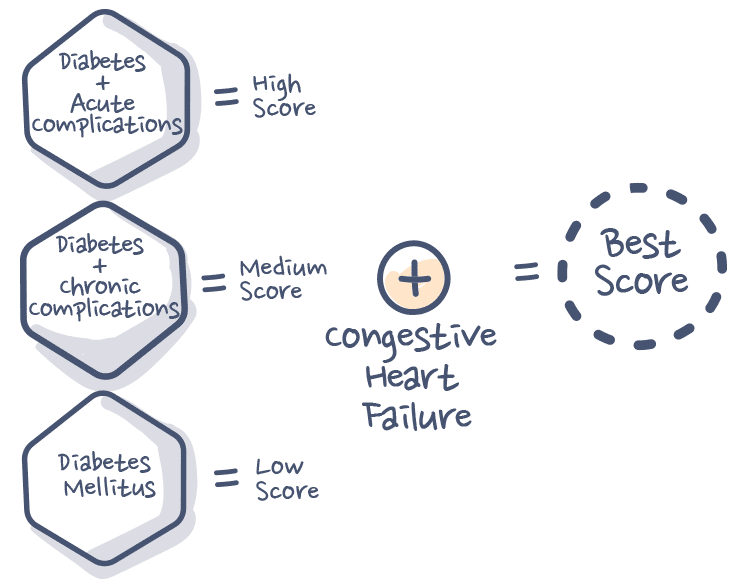The Medicare Advantage (MA) program is essential to the healthcare system as an alternative to traditional fee-for-service Medicare. A key component of the MA program is the CMS-HCC Risk Adjustment Model, which rates beneficiaries according to their diagnosed diseases. The scores are greatly impacted by capitation rates and the fixed amounts MA receives per beneficiary.
Although there is value in the current risk adjustment methodology, there will probably be substantial changes to medicare risk adjustment in the future. Here, we explore some of the significant developments and trends influencing this vital area of the healthcare system.
The Foundation of Medicare Risk Adjustment
Medicare is a federal health insurance program for people 65 years of age and older. It also covers some younger people with impairments. Medicare pays healthcare providers using medicare risk adjustment procedures. The idea is straightforward: to sufficiently pay for their care, patients with greater healthcare demands should be able to make larger payments. Based on their member’s health status, risk adjustment vendors guarantee that Medicare Advantage plans and other Medicare programs receive fair reimbursement.
Payer Considerations in 2024 and Medicare Advantage changes.
The cost-containment imperative for MA payers that mainly focus on ROI in product design is continuously growing as an undercurrent in 2024. This is expected to be a priority in the 2025 bid cycle. Regulatory changes are putting pressure on the top line and can warrant cutbacks. By 2030, over half of all MA-eligible individuals will be 75 years of age or older, up from around 40% currently. This rise, in addition to worries about a labor shortage, has led to growing fears about a possible eldercare crisis.
In May 2023, there were 710,000 open positions in the healthcare industry, and the pipeline for upcoming graduates suggests that this number will rise over the next ten years. As a result, 2024 will be crucial for implementing strategies to replenish the shrinking pool of medical professionals, nurses, CNAs, home health aides, nursing facility employees, and other essential eldercare supporters.
Challenges and Shortcomings of the Current Risk Adjustment Model
The present model has certain drawbacks in spite of its advantages:
- Restricted Precision: The model’s detractors contend that it falls short of capturing the complexity of patient health. It may ignore socioeconomic determinants of health and the effect of chronic illnesses on resource use because it mostly depends on diagnoses recorded in medical records.
- Playing with the System: There are worries about possible “upcoding,” in which medical professionals add diagnoses in an attempt to raise risk scores and obtain more outstanding capitation charges fictitiously. On the other hand, “downloading” could take place to lower reimbursement.
- Administrative load: The existing model puts a heavy load on doctors and health plans alike by requiring a great deal of documentation and coding work.
Emerging Trends in Risk Adjustment
- Focus on Social Determinants of Health (SDOH): Future models may include SDOH data to provide a more comprehensive view of a beneficiary’s health requirements, additionally, given the influence of variables such as income, housing, and education on health outcomes.
- Prospective Risk Adjustment: The existing methodology analyzes past diagnoses using retrospective data. Prospective medicare risk adjustment shows promise for a more accurate and dynamic method using data to predict future healthcare demands.
- Pay Attention to Results and Quality: To enhance beneficiary health and care delivery, it would be more beneficial to measure patient outcomes and care quality rather than only diagnosis.
- Leveraging Technology: Advanced analytics and machine learning are valuable tools for analyzing large volumes of data, such as SDOH measures, claims data, and clinical records. This can find possible coding discrepancies and increase the accuracy of risk scoring.
- Standardization and Transparency: Improving coding standards and increasing transparency in the risk adjustment procedure will be essential to guaranteeing accuracy and fairness.
Potential Future Models
- Activity-Based Risk Adjustment: In addition to diagnoses, this model may take into account information on healthcare utilization, including hospital admissions and outpatient visits.
- Global Capitation with Risk Adjustment: With more latitude for allocating healthcare resources, this approach would entail a fixed payment per beneficiary with modifications based on risk ratings.
- Accountable Care Organizations (ACOs) as the Focus: ACOs may assume more accountability for a population’s health management, which could result in risk adjustment models that reward both cost-effectiveness and high-quality care.
The Path Forward: Embracing Innovation and Collaboration
Anticipating Medicare risk adjustment in the healthcare landscape will require creativity and cooperation. By utilizing sophisticated analytical approaches, incorporating social determinants of health, and adhering to the principles of value-based care, we may develop Medicare risk adjustment models that appropriately reflect patient risk and provide incentives for the provision of high-quality care.
Furthermore, we can create a more equitable and sustainable healthcare system that puts the interests of both patients and providers first by addressing issues with data quality, regulatory complexity, and equity.
Wrapping Up
Medicare risk adjustment can potentially improve patient outcomes, raise the standard of treatment, and increase the efficiency of healthcare delivery. Through a collective dedication to excellence, innovation, and teamwork, we can fully realize the potential of risk adjustment vendors and guarantee a more healthful future for everybody.
Medicare risk adjustment holds great promise for raising the standard of care for beneficiaries. The healthcare system can improve its efficiency and fairness by moving away from a diagnosis-only model and toward a more comprehensive one that considers outcomes, social variables, and the possibility of preventive care. Technological innovation and cooperation between healthcare stakeholders will be essential to navigate this transition and create a more promising future for the healthcare system.


